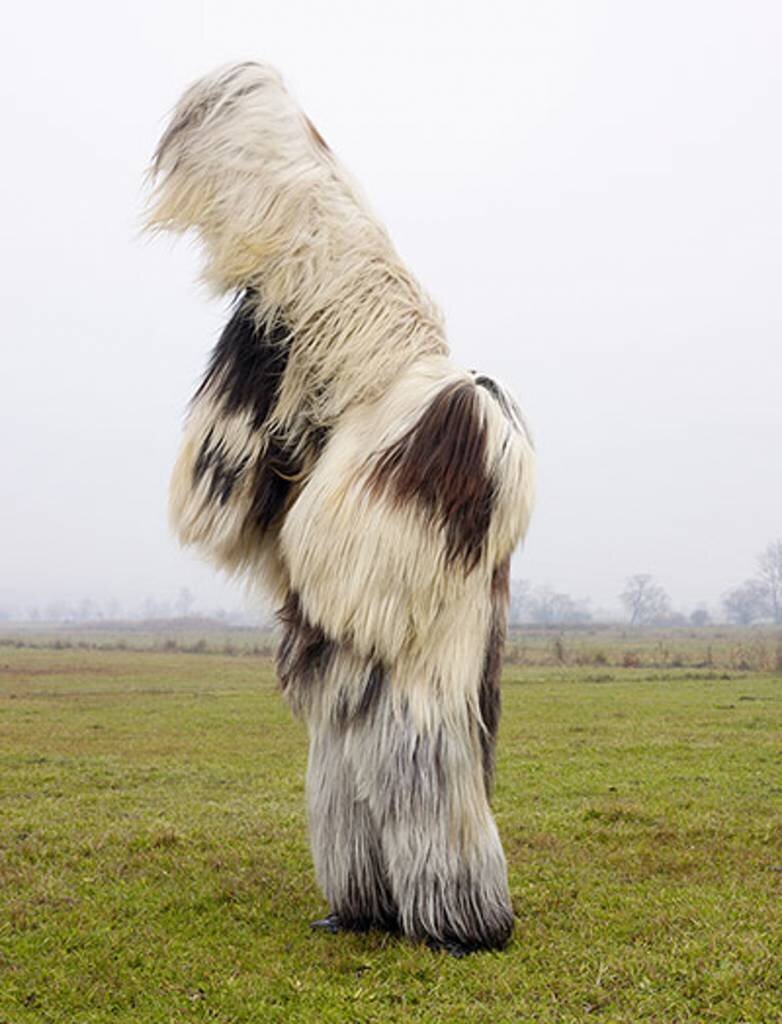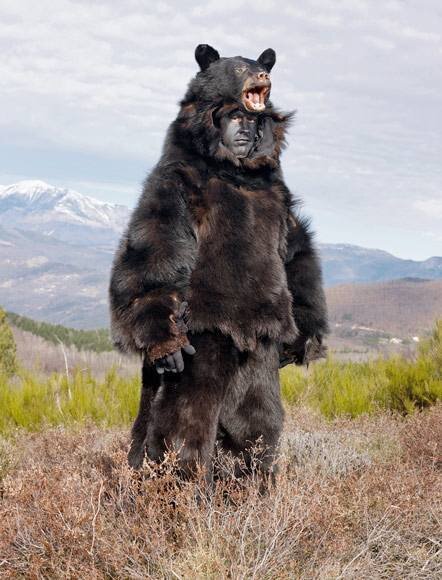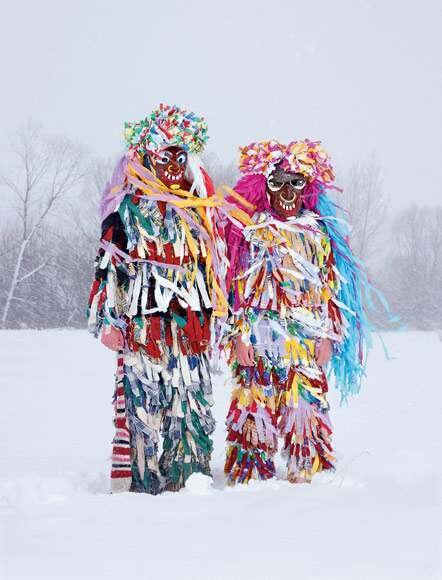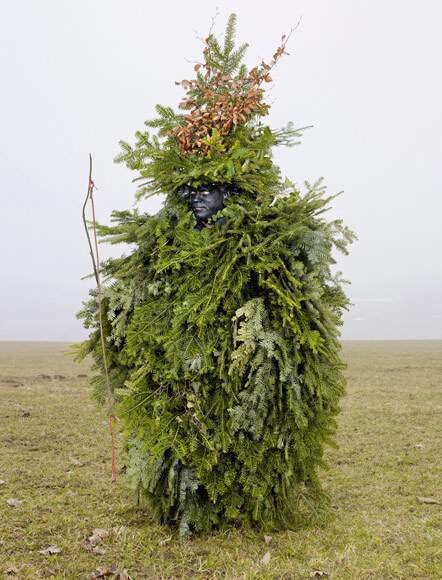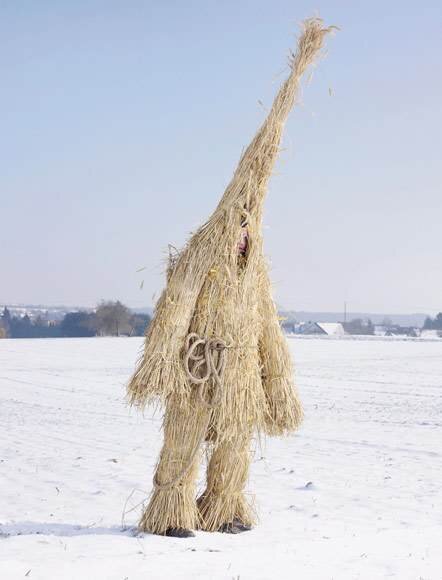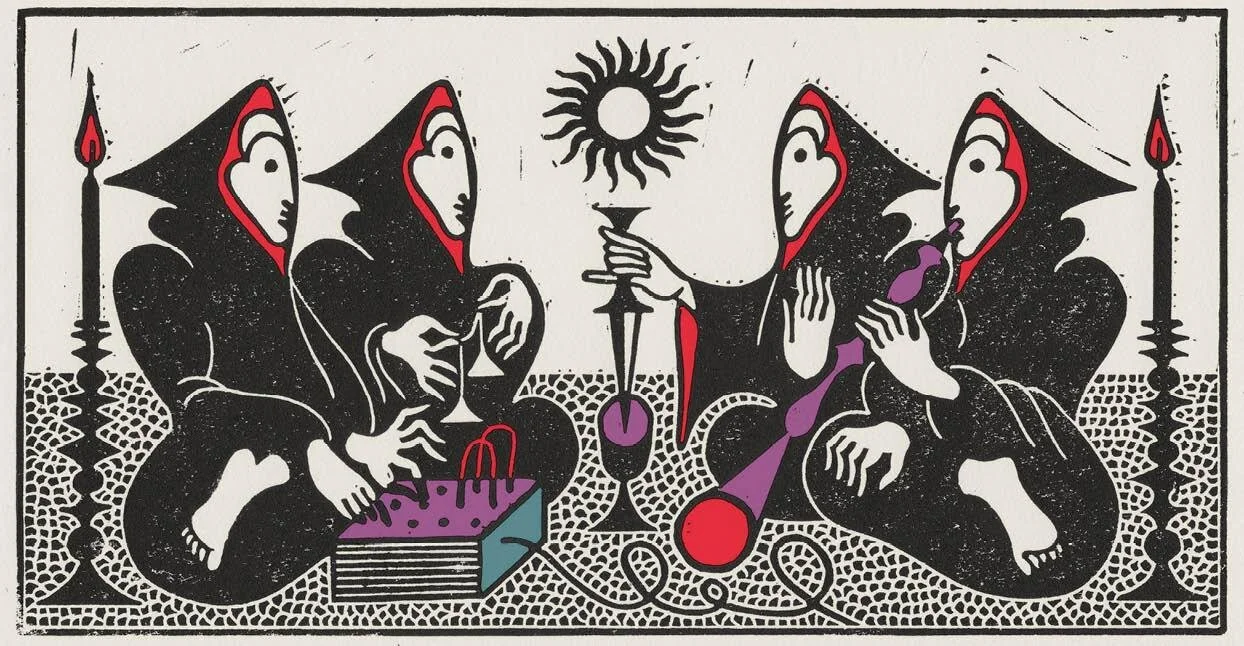By The Landlord
“Many believe that pagan worship is a thing of the past, but it is ever present – we have just given it a new name: pop culture.” – Billy Graham
"Paganism is infectious, more infectious than diphtheria or piety." – E. M. Forster
“There is something pagan in me that I cannot shake off. In short, I deny nothing, but doubt everything.” – Lord Byron
“You are the spell the universe has cast.” — Phyllis Curott, Wiccan priestess, attorney, author
“Come Fairies, take me out of this dull world, for I would ride with you upon the wind and dance upon the mountains like a flame!” — William Butler Yeats
“Great God! I'd rather be
A Pagan suckled in a creed outworn;
So might I, standing on this pleasant lea,
Have glimpses that would make me less forlorn;
Have sight of Proteus rising from the sea;
Or hear old Triton blow his wreathèd horn.” — William Wordsworth, The World Is Too Much with Us
“In the Amazon, the ayahuasqueros say the earth has its songs, the songlines of each plant. The songlines are a guide to the mind and use the vertical plane … The song seems alive like a plant, and in a whistle you hear a wisp of slender stem, while some notes have a shaded pizzicato as if the song noted the nodes on a stem where leaves of a fresh melody may form.” – Jay Griffiths, Wild
What horrors, or terrors, or indeed pleasures, lie in wait for us over the next week? When will it be over? For more reasons than usual, it is very much that time of year.
Meanwhile, let us turn to parallel forces of darkness, or indeed light, in the form of paganism. What is it? To be pagan certainly requires some obligatory behaviour – dressing up, ceremonious celebration, gathering together, getting close to nature, performance, indulgence in many earthly pleasures from eating, drinking, sometimes other substances, often leading to sex, showing off in a pleasurably enthusiastic, pantheistic partying manner, and generally having a very good time. Sounds a lot like the entire history of popular music to me.
Is paganism enduring or long-lasting? G. K. Chesterton wrote: "The pagan set out, with admirable sense, to enjoy himself. By the end of his civilisation he had discovered that a man cannot enjoy himself and continue to enjoy anything else.” And yet paganism keeps returning, especially for the Romantic poets, and in the 20th century, with Wicca. But more of that later.
So what form of music might this take for a song theme? Folk and rock certainly, and often in more extreme, perhaps avant grade forms, but also classical, country, traditional and many crossovers. This is far more about subject matter, from ceremony witchcraft, magic to nature worship, and below I'll try to explore what it might include.
Don’t mess with the Bulgarian Kulkeri …
It's impossible to really define thousands of years of what is essentially popular human culture and tradition, except the word pagan was generally invented as a derogatory term by Christianity from the Latin pagus, then paganus, and revived during the Renaissance, meaning 'country dweller', ‘villager', 'rustic', all as a way to distance itself from the yokels, bumpkins, savages, heathens and barbarians who did not conform, but continued to cherish, and often worship, not an abstract or mainstream god, but something that represented what they could actually see, feel and need to survive, from the sun to the trees, plants or animals. Pagans were not for formal religions, but associated with hedonism, those who are sensual, self-indulgent, unconcerned with the future, and living for earthly existence, unleashing not order, but chaos.
But while that negative, wild, scary and hairy association has certainly been a centuries-long and successful PR exercise, scratch under the surface, and much of what we still do, from letting off fireworks to musical festivals, placing gifts under Christmas trees, enjoying May Day holidays and especially dressing up for Halloween, or as it's also known – samhain, and well, most of us are still pretty pagan too. And while we don't necessarily dress up in fur, claw, horn, tooth or hoof and parade the streets with torches, if we take a look at the traditional pagan Wheel of the Year in its various parts, formal religion as well as secular culture still very much turn on a similar psychological and behavioural timeframe:
What comes around … the pagan wheel of the year
Briefly, these are:
Midwinter, known commonly as Yule or within modern Druid traditions as Alban Arthan, and the winter solstice associated with Stonehenge and the like, with the darkest day and longest night passing, but for most of us, eventually culminating in a tree in our living rooms, pushing out with pine needles against what is supposed to be a Christian tradition.
Imbolc or Candlemas – halfway between winter and spring, first stirrings and shoots of it - hopefully, or is that just half-term? Anyway, time for spring cleaning, and also alighted with contemporary American observance of Groundhog Day.
Spring equinox, or ostara, and certainly, definitely, hopefully spring is now on its way.
Beltane – the eve of May, celebration of fertility and phallic symbols with maypole dancing and the crowning of the Queen of the May, and traditionally the first day of summer in Ireland and Celtic paganism. In other words, May Bank Holiday. I reckon that myself and my siblings were all conceived at this time, because we were all born roughly nine months later. The rhythms of life, eh?
Summer solstice or litha. The longest day. Modern Druids celebrate this festival as Alban Hefin, "Light of Summer.” Others might call it Glastonbury Festival. And the day after old schoolfriend Tim Craig traditionally posts on social media that the nights are now drawing in.
Lammas or Lughnasadh comes in early August and is is the first of the three Wiccan harvest festivals. It involves walking the land and swishing sticks at it. It’s also when lots of people go on holiday. Or at least they used to.
Autumn equinox, harvest home, Mabon, the Feast of the Ingathering, Meán Fómhair, An Clabhsúr, or Alban Elfed (in Neo-Druid traditions), is a modern Pagan ritual of thanksgiving for the fruits of the earth and a recognition of the need to share them to secure the blessings of the Goddess and the God during the coming winter months. There’s nothing wrong with a bit of gratitude. After all, you can’t rely on the government for this, so instead you need to rely on yourself, goodwill, charities, or indeed star football striker and all round good guy Marcus Rashford to help feed impoverished families with children.
And finally samhain, or Halloween, which is almost upon us, considered especially by Wiccans to be one of the four Greater Sabbats. Samhain is a time celebrate the lives of those who have passed on, to pay respect to ancestors, family members, elders of the faith, friends, pets, and other loved ones who have died. Aligned with the contemporary observance of Day of the Dead and, once again, dressing up and generally having a good time.
Modern paganism, or neopaganism, includes reconstructed religions such as Roman Polytheistic Reconstructionism, Hellenism, Slavic Native Faith, Celtic Reconstructionist Paganism, or heathenry, as well as modern eclectic traditions such as Wicca and its many offshoots, Neo-Druidism, and Discordianism. There’s not space to go into all of those, and let’s not forget that this is a global topic, so South American, African, Polynesian and far eastern traditions and much more will also count, but let’s just pick some colourful examples at least from western culture. Prudence Jones’ and Nigel Pennick’s book A History of Pagan Europe (1995) sums up paganism’s main traits as recognising a plurality of divine beings, have a concept of the divinity of nature and recognise the feminine as sacred.
Wicca sounds very old, but is in fact an invention of the mid 20th century drawing on ancient traditions and a diverse set of ancient pagan and 20th-century hermetic motifs for its theological structure and ritual practices. Also called pagan witchcraft, it was developed in England in the 1940s and introduced to the public in 1954 by Gerald Gardner, a retired British civil servant, and author Doreen Valiente. Wicca us not centralised, and so it hard to define, duotheistically worshipping and/or working with a Goddess and a God, rather confusingly a neopagan Triple Goddess and the Horned God. Anyway, here’s Valiente:
Careful with those candles (and more), Doreen …
Paganism spans the world, but for my money it is the outer reaches or eastern or northern Europe that have some of the most colourful traditions. As Thomas Carlyle put it: “I think Scandinavian Paganism, to us here, is more interesting than any other. It is, for one thing, the latest; it continued in these regions of Europe till the eleventh century; 800 years ago the Norwegians were still worshipers of Odin. It is interesting also as the creed of our fathers; the men whose blood still runs in our veins, whom doubtless we still resemble in so many ways.”
Here are some other choice ones. Perhaps taking the proverbial pagan biscuit are the kukeri in Bulgaria. Of Thracian origins, performed between Christmas and Lent by costumed men in sheepskin garments, bells and masks, who walk around and dance to scare away the evil spirits, and In the past they’d brush against women to bestow fertility (yeah, any excuse), in hope to provide a good harvest, health, fertility, and happiness. Above all they embody and chase away evil spirits. No kidding.
It’s hot in here you know. The Bulgarian kukeri
At the Vevcani Carnival in Macedonia participants through their masks, in a tradition that has lasted 14 centuries, mock political events and perform various pagan rituals to mark the beginning of the year in the Julian calendar on St. Basil’s day. Scary tea ladies, anyone?
More tea, dear? Vevcani Carnival in Macedonia
An ancient tradition also occurs in Mamoiada, a small village tucked into the middle of wild and mountainous Sardinia. On the day of Saint Anthony, the saint protector of animals and fire, the men of the village transform to become Mamuthones and Issohadores. Complementing one another like yin is to yang, mamuthones echo the darkness, while issohadores rope in the light.
Paganism with bells on. The Mamoiada in Sardinia
And here also in our very own pagan fashion parade are some other wonderful costumes including Babugieri, Germany’s Strohman, Poland’s Macidulas, Swiss tree-man sauvage, Basque farmer figure and French Bear festival:
We also have a procession of guests here to tell us more about paganism.
“I enjoyed history at school. I'd always had a sense of pagan England,” says Damon Albarn, getting in early, as ever.
Joining him at the musical table, Steve Earle is thinking about death. “Funerals are a pagan rite. There's not any doubt about it.”
And Genesis P-Orridge, with his scary teeth, is also in, and refers to Pagan Day, the album by Psychic TV. Was it his idea? “No is was Alex Fergusson’s. It was him that encouraged me to start making music again and start Psychic TV.” He is of course talking about the Scottish guitarist and record producer with Alternative TV, not the former manager of Manchester United with just one ’s', so not nearly as scary as him.
Genesis P-Orridge
But what about paganism’s history? DH Lawrence takes in a bigger religious perspective. “The great pagan world of which Egypt and Greece were the last living terms once had a vast and perhaps perfect science of its own, a science in terms of life. In our era this science crumbled into magic and charlatanry. But even wisdom crumbles … The Christian fear of the pagan outlook has damaged the whole consciousness of man.”
And there are more authors here on the potent, provocative relationship between Christianity and paganism.
“Christianity did not destroy paganism; it adopted it,” says Will Durant.
“The vestiges of pagan religion in Christian symbology are undeniable. Egyptian sun disks became the halos ... The pre-Christian God Mithras ... had his birthday celebrated on December 25 ... Even Christianity's weekly holy day was stolen from the pagans ... Christianity honored the Jewish Sabbath of Saturday, but Constantine shifted it to coincide with the pagans' veneration of the day of the sun ... To this day, most churchgoers attend services on Sunday morning with no idea that they are there on account of the pagan sun god's weekly tribute- Sunday,” says big-selling author Dan Brown.
“Well,” adds poet Emily Dickinson, “The Supernatural is only the Natural disclosed.”
“Religion itself is an absurdity and an anomaly, and paganism is acceptable only because it represents that purely orgiastic phase of religion farthest from reality,” says H.P. Lovecraft.
“Paganism is that view of life which finds the highest goal of human existence in the healthy and harmonious and joyous development of existing human faculties. Very different is the Christian ideal. Paganism is optimistic with regard to unaided human nature, whereas Christianity is the religion of the broken heart,” adds John Gresham Machen.
“Yes,” says Ambrose Bierce. What is a heathen? A benighted creature who has the folly to worship something that he can see and feel.”
And lurking out of the darkness comes he notorious figure of Aleister Crowley, inspiration for much rock and folk. He’s got a table all on his own, as other patrons at the Bar are too scared to sit with him. “Paganism is wholesome because it faces the facts of life,” he announces, and everyone nods vaguely, as that sort of makes sense. Then he speaks again:
"I am the blue-lidded daughter of Sunset; I am the naked brilliance of the voluptuous night-sky." Then there’s an awkward silence.
Let’s close then with a little bit of film and music inspiration. It would be remiss not to enjoy a little bit of the procession from The Wicker Man, that fertility rite on the Hebridean Summerisle, fronted by Christopher Lee, from Robin Hardy’s amazing 1973 British horror film of Celtic paganism. But who is playing the fool now?
And then there is Midsommar, the 2019 teen horror film inspired by Scandinavian fertility paganism and ritual sacrifice, which is really over the top, and not for those scared of heights, hammers, fire or wheat.
And music? Where might you start? You might start with better known artists who reference the pagan, from Led Zeppelin to David Bowie, Patti Smith, Stevie Nicks, The Doors, The Moody Blues, Pink Floyd or Genesis, but there are many more specialists pagan-style artists, such as Germany’s Faun, Norway’s Wardruna or Hagalaz Runedance, Denmark’s Danheim, Canada’s Loreena McKennitt, metal merchants Godsmack, folk’s SJ Tucker, the witchy Dorothy or Lindie Lila, Celtic rockers Blackmore’s Night, or Swiss mountain rockers Eluveitie. There’s a whole other world out there… To set things off, let’s frolic round the camp fire with a dash of Faun:
So then, turning to this week’s pagan head of the procession and wizard in chief, who will help parade your suggestions into playlists and no doubt more over the next week, is the processional professional DJ PopOff, whose Mixcloud radio can also be enjoyed here! Place your pagan-related songs in comments below for last orders on Monday 11pm GMT, for playlists published on Wednesday. See you on the other side …
Join the druids in a jam
New to comment? It is quick and easy. You just need to login to Disqus once. All is explained in About/FAQs ...
Fancy a turn behind the pumps at The Song Bar? Care to choose a playlist from songs nominated and write something about it? Then feel free to contact The Song Bar here, or try the usual email address. Also please follow us social media: Song Bar Twitter, Song Bar Facebook. Song Bar YouTube. Subscribe, follow and share.
Please make any donation to help keep Song Bar running:








